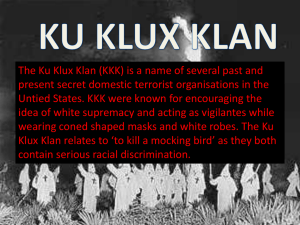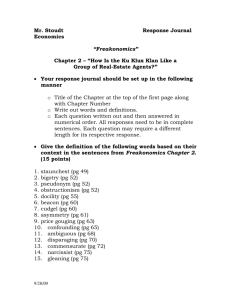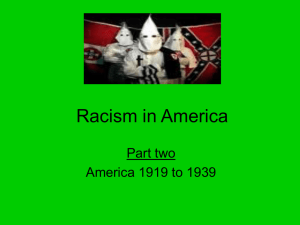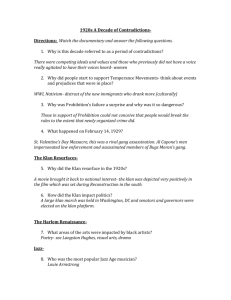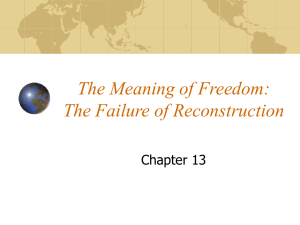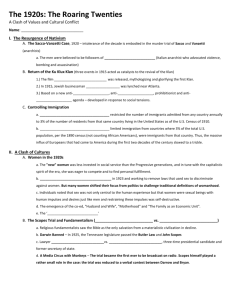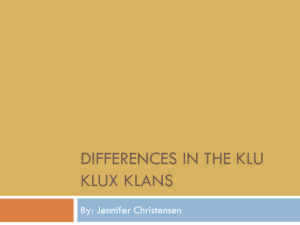KKK in Martin County
advertisement
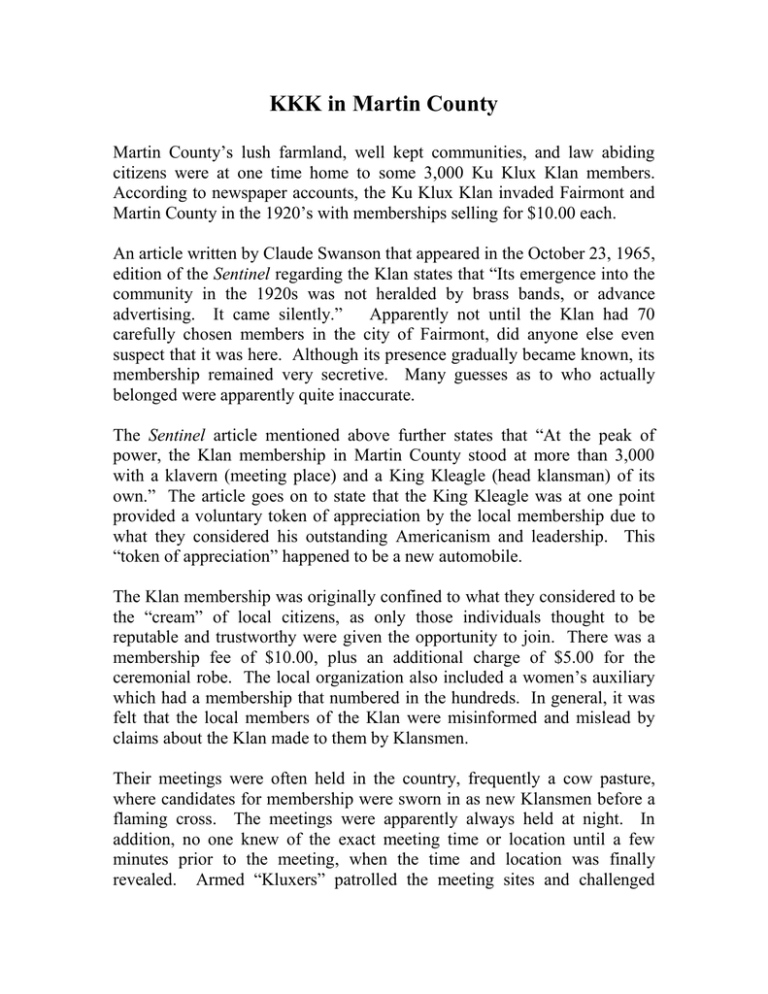
KKK in Martin County Martin County’s lush farmland, well kept communities, and law abiding citizens were at one time home to some 3,000 Ku Klux Klan members. According to newspaper accounts, the Ku Klux Klan invaded Fairmont and Martin County in the 1920’s with memberships selling for $10.00 each. An article written by Claude Swanson that appeared in the October 23, 1965, edition of the Sentinel regarding the Klan states that “Its emergence into the community in the 1920s was not heralded by brass bands, or advance advertising. It came silently.” Apparently not until the Klan had 70 carefully chosen members in the city of Fairmont, did anyone else even suspect that it was here. Although its presence gradually became known, its membership remained very secretive. Many guesses as to who actually belonged were apparently quite inaccurate. The Sentinel article mentioned above further states that “At the peak of power, the Klan membership in Martin County stood at more than 3,000 with a klavern (meeting place) and a King Kleagle (head klansman) of its own.” The article goes on to state that the King Kleagle was at one point provided a voluntary token of appreciation by the local membership due to what they considered his outstanding Americanism and leadership. This “token of appreciation” happened to be a new automobile. The Klan membership was originally confined to what they considered to be the “cream” of local citizens, as only those individuals thought to be reputable and trustworthy were given the opportunity to join. There was a membership fee of $10.00, plus an additional charge of $5.00 for the ceremonial robe. The local organization also included a women’s auxiliary which had a membership that numbered in the hundreds. In general, it was felt that the local members of the Klan were misinformed and mislead by claims about the Klan made to them by Klansmen. Their meetings were often held in the country, frequently a cow pasture, where candidates for membership were sworn in as new Klansmen before a flaming cross. The meetings were apparently always held at night. In addition, no one knew of the exact meeting time or location until a few minutes prior to the meeting, when the time and location was finally revealed. Armed “Kluxers” patrolled the meeting sites and challenged anyone nearing the meeting location. When membership reached about 300, the organization began to bring in speakers from the outside for their public meetings. The headline of the July 6, 1926, edition of the Fairmont Daily Sentinel states the following: “66,000 Celebrate in County, 1 Accident.” This involved a three day county celebration of our nations 150 th birthday, its Sesquicentennial. The article goes on to state that the largest crowd ever assembled here at one time attended the big Klan celebration at Interlaken. It was said that the “Kluxers” began entering early in the day. The crowd was estimated to be from 20,000 to 25,000 people, of which half were thought to be Klan members. They apparently took an active part in the festivities. The Klan offered to pay a $10.00 reward for information leading to the arrest of bootleggers. They also had 250 robed Klansmen holding red torches in making a living, fiery cross, and they had planned for a Klan wedding. The wedding, however, didn’t materialize, as the contracted couple backed down and were married the day preceding the celebration. Although attempts were made to find another couple for the wedding ceremony, there were no volunteers that came forward and, as a result, there was no Klan wedding. The Klan appeared to be rather well organized and quite powerful locally, as it was said that at one point they elected both a mayor and city council in Fairmont. Its membership continued to grow for about a year. Eventually, however, the organization became less selective and began to accept anyone with the $10.00 membership fee. This apparently led to what Klan members referred to at the time as “crooks, bootleggers, and renegades” joining the organization. It seems that this was a factor which soon led to the demise of the local organization. Eventually, after a number of southern orators were summoned to this area to preach hate and vengeance, the local membership became quite concerned. Although originally motivated by what the locals considered to be good intentions, they soon became fearful of involvement in an organization of this nature, and quickly relinquished their memberships. In a short time, the KKK in Martin County was a thing of the past. The “King Kleagle” returned to Minneapolis with his new automobile that the membership had provided for him and he was never heard from since. Local citizens were said to feel that he got out “just in time.”
